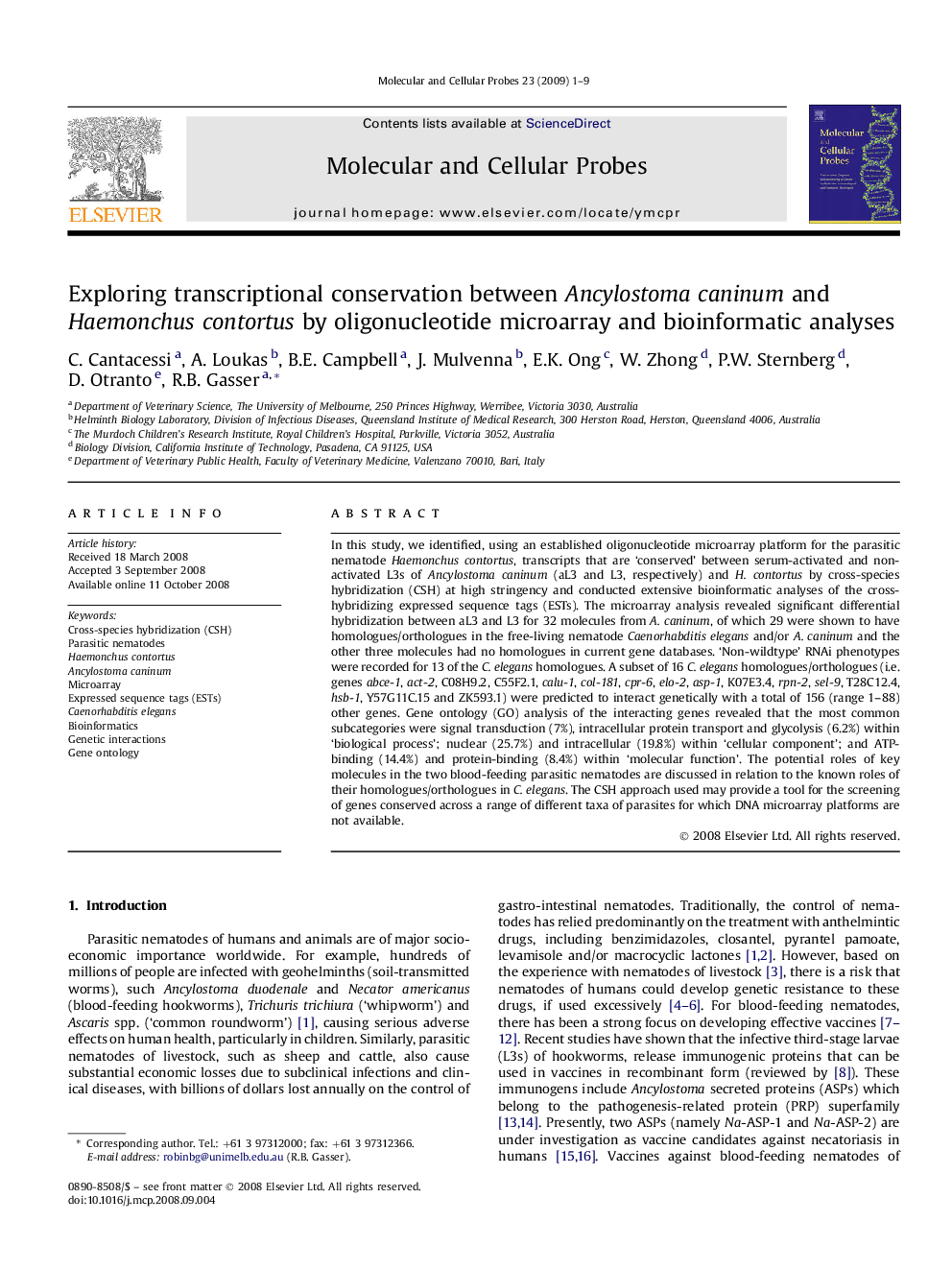| کد مقاله | کد نشریه | سال انتشار | مقاله انگلیسی | نسخه تمام متن |
|---|---|---|---|---|
| 2199865 | 1099626 | 2009 | 9 صفحه PDF | دانلود رایگان |

In this study, we identified, using an established oligonucleotide microarray platform for the parasitic nematode Haemonchus contortus, transcripts that are ‘conserved’ between serum-activated and non-activated L3s of Ancylostoma caninum (aL3 and L3, respectively) and H. contortus by cross-species hybridization (CSH) at high stringency and conducted extensive bioinformatic analyses of the cross-hybridizing expressed sequence tags (ESTs). The microarray analysis revealed significant differential hybridization between aL3 and L3 for 32 molecules from A. caninum, of which 29 were shown to have homologues/orthologues in the free-living nematode Caenorhabditis elegans and/or A. caninum and the other three molecules had no homologues in current gene databases. ‘Non-wildtype’ RNAi phenotypes were recorded for 13 of the C. elegans homologues. A subset of 16 C. elegans homologues/orthologues (i.e. genes abce-1, act-2, C08H9.2, C55F2.1, calu-1, col-181, cpr-6, elo-2, asp-1, K07E3.4, rpn-2, sel-9, T28C12.4, hsb-1, Y57G11C.15 and ZK593.1) were predicted to interact genetically with a total of 156 (range 1–88) other genes. Gene ontology (GO) analysis of the interacting genes revealed that the most common subcategories were signal transduction (7%), intracellular protein transport and glycolysis (6.2%) within ‘biological process’; nuclear (25.7%) and intracellular (19.8%) within ‘cellular component’; and ATP-binding (14.4%) and protein-binding (8.4%) within ‘molecular function’. The potential roles of key molecules in the two blood-feeding parasitic nematodes are discussed in relation to the known roles of their homologues/orthologues in C. elegans. The CSH approach used may provide a tool for the screening of genes conserved across a range of different taxa of parasites for which DNA microarray platforms are not available.
Journal: Molecular and Cellular Probes - Volume 23, Issue 1, February 2009, Pages 1–9